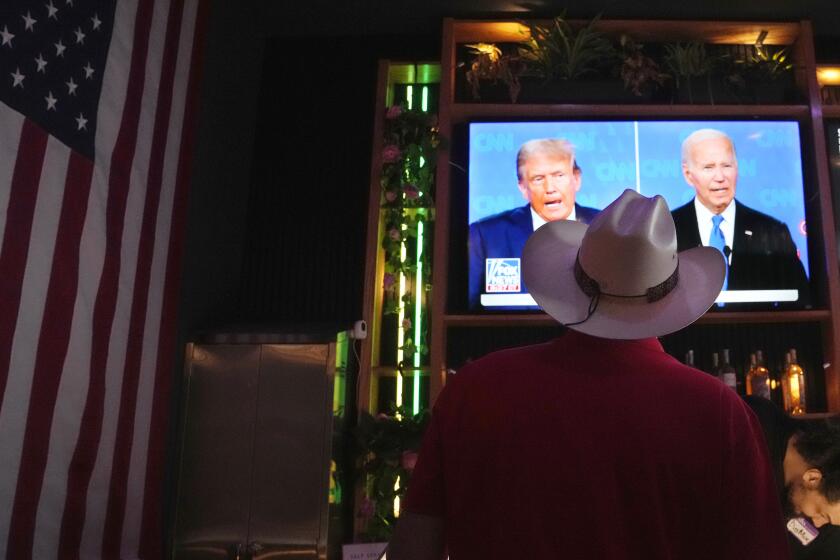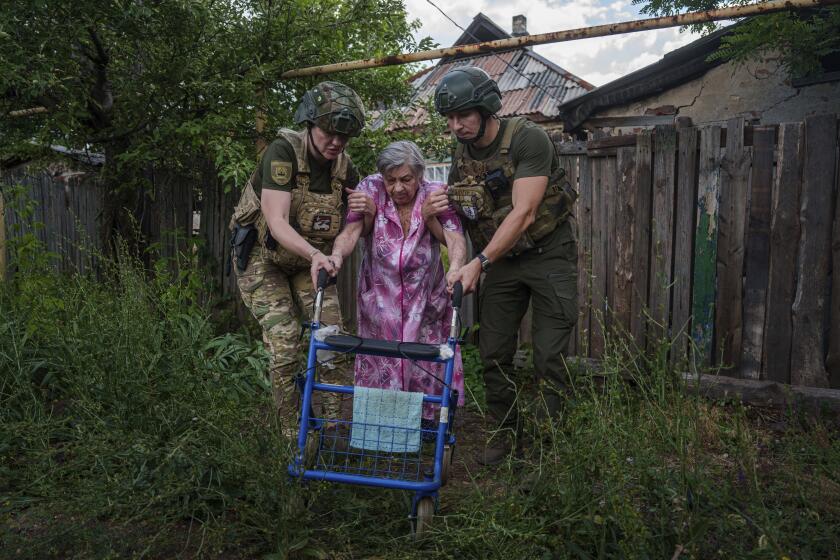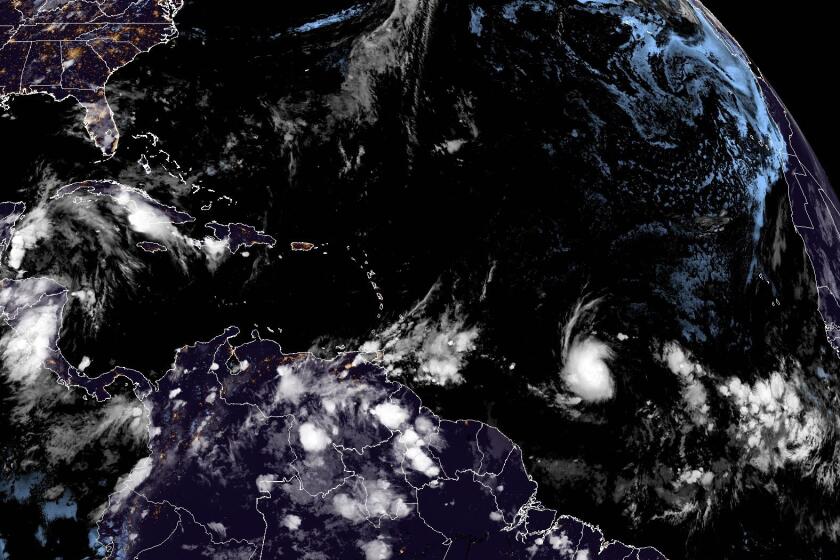Harry Rossoll; Creator of Smokey Bear
Harry Rossoll, the U.S. Forest Service illustrator who concocted and drew the icon Smokey Bear urging all Americans to prevent forest fires, has died. He was 89.
Rossoll, who drew Smokey’s public service cartoons for 35 years, died Thursday of an intestinal aneurysm at DeKalb Medical Center in Atlanta.
His more than 1,000 “Smokey Says” cartoons, which appeared in more than 3,000 newspapers, were the cornerstone of one of the most successful public relations campaigns in history.
In 1941, about 208,000 fires burned 30 million acres of forest and range land throughout the country. Fifty years later, Forest Service figures showed that 10 times as many people visited the national forests but the number of fires was half the 1941 figure. The public safety campaign is credited with saving about $15 billion in fire damage.
U.S. Agriculture Secretary Dan Glickman issued a statement expressing sorrow at the death of Rossoll, whom he called “the father of Smokey Bear, a beloved national treasure.”
“Mr. Rossoll’s creation proved that public service announcements can have a significant and lasting impact on our nation,” Glickman said. “We are certainly a better nation because of Harry Rossoll’s creativity. His work will always be appreciated.”
Rossoll worked for the Forest Service from 1937 until his retirement in 1971. Early in his tenure, he was asked to create a caricature that would symbolize safety and awareness in America’s forests.
He first drew Ranger Jim. That campaign failed because Ranger Jim looked too much like a government official.
“And I figured, well, let me see, Walt Disney used animals. You could put words into animals’ mouths and get away with it,” Rossoll recalled in a CNN television interview in 1993.
Next came Joe Beaver, who put out fires by slapping them with his broad tail, and then Fire Devil. But neither of them caught on.
Then Rossoll tried a sketch of a fat bear with a pointed muzzle, which his colleague Rudy Wendelin helped refine into the popular version. Smokey Bear was officially born in 1944.
In 1950, an injured orphan bear cub was found clinging to a tree after a forest fire in New Mexico. The cub was dubbed Smokey, and as a living symbol of Rossoll’s creation, it was sent to live in the National Zoo in Washington. That Smokey died in 1976.
A toy Smokey Bear marketed in the early 1950s included a certificate of enrollment in the Junior Forest Ranger Program. Half a million children were enlisted in three years. The indelibly popular Smokey now has his own ZIP Code (20252).
“I would say that probably Smokey Bear is responsible for the consciousness of . . . the national forests in the public eye, that our forests are important to our nation,” Rossoll said in the 1993 interview, “and trees do an awful lot of good things for us.”
Retirement from the Forest Service did not quench Rossoll’s fire prevention efforts. He continued to talk with foresters, schoolchildren and other groups.
He also created the character T. Bear to encourage planting trees. A book featuring T. Bear, with text by Rossoll’s niece, microbiologist June A. Bradlaw, is to be published this year.
Although Smokey gave Rossoll his greatest fame, an unexpected project during his retirement gave him even more satisfaction.
In the mid-1970s, he was invited to paint 14 7-by-25-foot murals for the Forest Heritage Center in Beavers Bend State Park near Broken Bow, Okla. The murals, which required 12 years to complete, illustrate the forest past, present and future.
“This creation of my murals in Oklahoma Forest Heritage Center is my glory in my life,” Rossoll said in 1993. “I don’t care whether I die now because I’ve reached the pinnacle of my life.”
As fond of music as he was of art, Rossoll played trombone with dance bands on weekends.
He was a widower who had lost his son and daughter in separate accidents.
More to Read
Start your day right
Sign up for Essential California for news, features and recommendations from the L.A. Times and beyond in your inbox six days a week.
You may occasionally receive promotional content from the Los Angeles Times.






